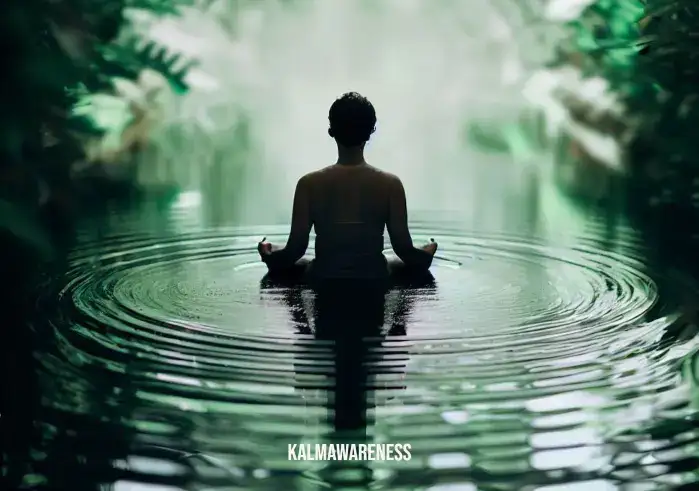Unveiling the Power of Water Meditation: A Comprehensive Guide to Meditating in Water
Meditation is a transformative practice that encompasses a myriad of techniques, each having their unique characteristics and benefits. One intriguing method is learning how to meditate in water, an ancient technique recently regaining popularity for its profound impact on relaxation, mindfulness, and overall well-being. Meditating in water invites you to embark on a journey of self-discovery and tranquillity while immersed in nature’s most vital element.
I. Introduction to Meditating in Water
Water meditation, a form of mindfulness practice, involves achieving a meditative state while being immersed in water. Water, with its calming and therapeutic properties, serves as an excellent medium for fostering relaxation and facilitating deeper levels of consciousness. As you allow the soothing rhythm of the water to align with your breath, you begin to resonate with the natural flow and fluidity of life itself. Much like meditating in the dark, meditating in water offers a distinctive sensory experience that can elevate your meditation practice.
II. The Water Element in Meditation
In various spiritual traditions, water is revered as a symbol of purity, tranquillity, and life. Water signifies the fluid, ever-changing nature of our existence and emotions. When we choose to meditate in water, we invite these qualities into our practice, deepening our connection with our own fluid nature and allowing us to tap into a reservoir of serenity within ourselves. The symbolism of water can also enrich the process of meditating on words of power, as we align our thoughts and intentions with the ebb and flow of the water.
This form of meditation isn’t limited to healthy individuals only. It’s equally beneficial for those seeking therapeutic benefits during challenging times, such as meditating while sick, as water’s calming properties can provide soothing relief.
“Just like a drop of water in the ocean, you are connected to the whole. Allow the serene rhythm of water to guide you into a deeper state of mindfulness and tranquility.”
Before we delve further into the benefits and techniques of water meditation, it is essential to understand its place within the broader spectrum of meditation. Our detailed guide on meditation and its practice can offer you a comprehensive overview of various meditation methods, their origins, benefits, and how to incorporate them into your daily routine.
I invite you to continue to the next part of this article, where we’ll explore the various benefits of meditating in water, how it can enhance your overall health, mental well-being, and deepen your meditation practice. We will also delve into the diverse types of water meditation practices, their unique attributes, and how to choose the right one for your individual needs.
Stay tuned for more insights and deep-diving into the world of water meditation!
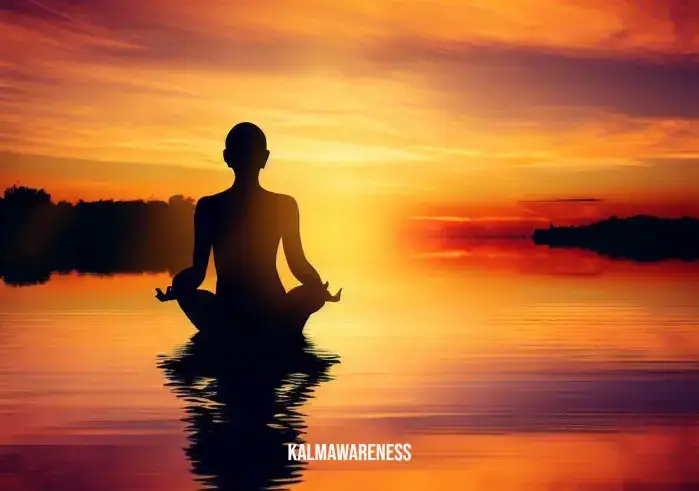
III. Benefits of Meditating in Water
Understanding how to “meditate in water” comes with a profound array of benefits. The blend of meditation and water creates a holistic approach to well-being, integrating the benefits of mindfulness with the soothing properties of water.
Physical Health Benefits
- Stress Relief: Water is naturally soothing to our senses. When combined with meditation, it amplifies the stress-relieving effects, helping to decrease cortisol levels, lower blood pressure, and induce a state of deep relaxation. This natural stress relief can be as beneficial as methods taught in mindful yoga.
- Enhanced Flexibility: Water’s buoyancy lessens the impact on your joints, making it easier to perform certain movements and stretches. By incorporating these movements into your water meditation, you can enhance your physical flexibility.
- Improved Sleep: As you meditate in water, your mind and body descend into a state of deep relaxation, leading to improved sleep patterns. This can be particularly beneficial for those suffering from insomnia.
Mental Health Benefits
- Mindfulness: Water meditation can help cultivate mindfulness, a state of being present and engaged in the current moment. Just as practices like mindful movement meditation engage the body and mind, meditating in water encourages a deep sense of connection and presence.
- Reduced Anxiety: The calming effect of water, combined with focused breathing, can help reduce anxiety and promote mental calmness.
- Improved Focus: As you meditate in water and attune your senses to the rhythm of the water, you can enhance your capacity to concentrate.
Just like in a meditation coalition, where different individuals come together to meditate, water meditation can be a shared experience, fostering a sense of connection with others and the environment.
IV. Types of Water Meditation Practices
Water meditation practices can vary widely, from the location to the techniques used. Here are a few examples:
- Ocean or Sea Meditation: This involves meditating while being in the ocean or sea. The rhythmic sound of waves can enhance the meditative experience.
- River or Stream Meditation: Meditating by a river or stream, with the soothing sound of running water, can help you enter a deep state of relaxation.
- Bath Meditation: A more accessible form for many, this involves meditating while submerged in a bath. This practice can be enhanced with the use of essential oils or Epsom salts.
- Rain Meditation: Here, the sound and feel of rain become focal points for your meditation. This practice can be particularly grounding and calming.
Water meditation can be adapted and modified to suit individual needs, much like creating a personalized meditation lesson plan.
For athletes, merging meditation with their sports routine is not uncommon. For example, the concentration and mindfulness in meditation basketball help players enhance their focus on the court. Similarly, swimmers and other water-sport athletes can incorporate water meditation into their training routine to boost their mental strength and performance.
We invite you to explore the next chapter, where we’ll guide you through the steps of preparing for a water meditation session and a step-by-step guide on how to effectively meditate in water. We will also share tips on enhancing your water meditation experience and safety considerations when you meditate in water. Immerse yourself further in the wisdom of water meditation and discover new depths of serenity within.
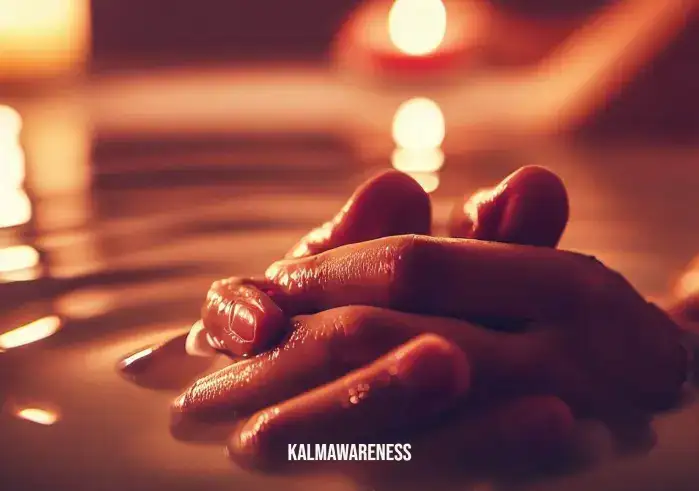
V. Preparing for a Water Meditation Session
Preparing to “meditate in water” entails more than just diving into the nearest body of water. As with any form of meditation, setting the right conditions can significantly enhance your experience.
Finding the Right Location
Select a place that resonates with your comfort and safety needs. It could be your bathtub, a private pool, a calm lake, or even a secluded spot at the beach. The choice of location is as diverse as the range of practices offered in meditation for beginners.
Creating a Comfortable Environment
Ensure that the water temperature is comfortable. If you’re meditating in a bath or pool, consider adding Epsom salts or essential oils for a relaxing aromatic experience.
Setting an Intention
Before you begin to meditate, set an intention. Your intention could be as simple as seeking relaxation or as specific as cultivating a sense of peace amidst life’s storms, much like meditation for divorce.
Choosing a Time
Choose a time when you’re least likely to be interrupted. Many prefer meditating in the early morning or late evening when the world is quieter. It’s similar to choosing an optimal time for micro-meditation.
VI. Step-by-Step Guide to Meditating in Water
Now that you’re prepared, let’s dive into how you can meditate in water.
- Get Comfortable: Enter the water and adjust your position until you’re comfortable. This could mean lying back in a bathtub, floating in a pool, or sitting waist-deep in a lake.
- Breathe: Close your eyes and bring your attention to your breath. Observe the sensation of air entering and leaving your body. It’s the same technique used in the practice of meditation on acceptance.
- Feel the Water: Tune into the sensation of water against your skin. Feel its temperature, its movements. Become aware of your body’s buoyancy.
- Observe Your Thoughts: As you meditate, thoughts will inevitably arise. Acknowledge them, then let them go, returning your focus to the sensation of water and your breath.
- Connect with the Water Element: Imagine the water washing away stress and negativity, leaving you cleansed and refreshed. It’s a similar concept to meditation for beauty, where you visualize beauty emanating from within you.
Remember, meditation is a practice. You may not feel significant changes immediately, but with time and consistent practice, you will start to experience the profound benefits of meditating in water.
Meditation isn’t limited to adults; it’s beneficial for all ages. Much like there are resources for meditation for kids near me, water meditation techniques can be adapted to suit children and adolescents, ensuring they too can reap the benefits of this mindful practice.
Continue to the next part of the article to explore tips for enhancing your water meditation experience, safety considerations, different water meditation environments, and combining water meditation with other mindfulness practices. Immerse yourself further in the tranquillity of meditating in water.
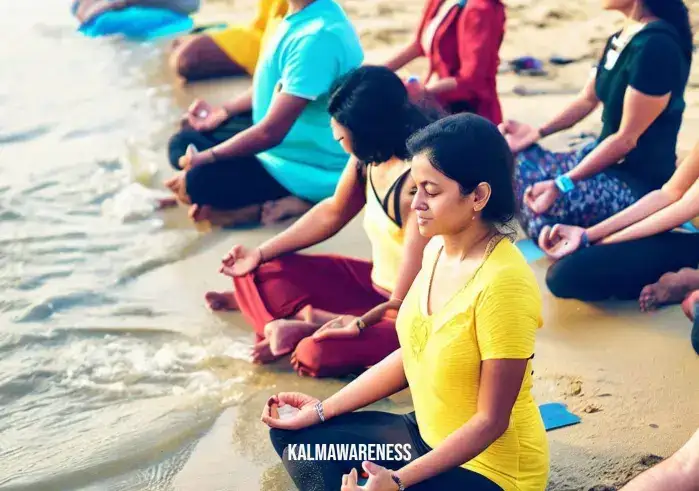
VII. Tips for Enhancing Your Water Meditation Experience
To deepen your water meditation practice, try these tips:
- Incorporate Sound: The soft sounds of nature or calming music can enhance your meditation experience. Consider using meditating on words of power to chant or recite during your meditation.
- Utilize Aromatherapy: If you’re meditating in a bath or pool, consider adding essential oils like lavender, chamomile, or sandalwood to the water. These scents can enhance the relaxing effects of your meditation session.
- Practice Consistently: As with any form of meditation, consistency is key. It’s better to meditate for a few minutes daily rather than an hour once a week. Think of it as a meditation rest token, a daily pause to recharge your mind and body.
- Keep an Open Mind: As you “meditate in water”, you may experience unique sensations or emotions. Maintain an open mind and a non-judgmental attitude toward whatever arises.
VIII. Safety Considerations for Meditating in Water
While water meditation can be profoundly calming and therapeutic, it’s crucial to prioritize safety.
- Choose Safe Locations: If you’re meditating in natural bodies of water, ensure they are safe, clean, and suitable for swimming.
- Consider Your Swimming Abilities: If you’re not a confident swimmer, stick to shallow waters, or meditate in a bath or shallow pool. Safety comes first.
- Stay Aware of Time: It’s easy to lose track of time while meditating. Especially in warm water, prolonged exposure can lead to dehydration or heat stroke.
- Avoid Alcohol: Alcohol and meditation don’t mix well, especially when water is involved. Stay sober to ensure a clear mind and prevent any accidental harm.
IX. Exploring Different Water Meditation Environments
As with many types of meditation like meditating in the dark or meditating while sick, the environment you choose for water meditation can greatly impact your experience. You may choose:
- Natural Bodies of Water: Meditating in an ocean, lake, or river can connect you with nature on a profound level. The natural sounds and movements of water add a dynamic element to your meditation.
- Man-Made Bodies of Water: Pools and hot tubs provide a controlled environment where temperature and disturbances can be easily managed.
- Indoor Water: Meditating in a bath or a shower can be a comforting and easily accessible form of water meditation.
X. Combining Water Meditation with Other Mindfulness Practices
To deepen your meditation practice, consider combining water meditation with other mindfulness techniques.
- Mindful Swimming: If you’re in a pool or the ocean, incorporate mindful swimming. Focus on your movements and the sensation of water against your skin.
- Yoga: Performing yoga poses in water can be a unique and challenging mindfulness practice.
- Mindful Walking: If you’re in a shallow body of water, try mindful walking. Pay attention to the sensation of your feet touching the water and the sand beneath.
For musicians, consider incorporating elements of meditation for musicians by using the soothing sounds of their instruments to accompany their water meditation sessions.
Continue to the concluding part of this article to fully embrace the serenity of meditating in water, where we’ll wrap up everything we’ve covered so far about this deeply calming and centering practice.
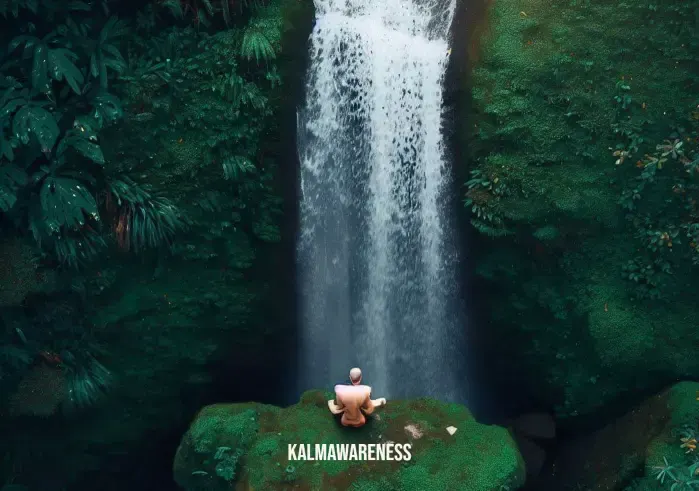
Conclusion: Embrace the Serenity of Meditating in Water
“Meditate in water” is more than a unique approach to mindfulness – it’s an invitation to tap into the ancient, healing properties of water and unlock deeper dimensions of self-awareness and inner peace. The journey we’ve embarked on throughout this article has explored the practice’s origins, benefits, and how you can integrate it into your life in a way that resonates with your individual needs and preferences.
Like any meditative practice, consistency is key. Building a regular habit is like meditation and its practice, leading to cumulative benefits over time.
Remember, the key to successful meditation lies not in the pursuit of certain outcomes or states of mind but in the practice itself. Whether you’re seeking to meditate in water to reduce stress, improve mental clarity, or cultivate a deeper connection with nature and the self, the journey is yours to shape and the benefits yours to reap.
“Water is fluid, soft, and yielding. But water will wear away rock, which is rigid and cannot yield. As a rule, whatever is fluid, soft, and yielding will overcome whatever is rigid and hard. This is another paradox: what is soft is strong.” – Lao Tzu
In this way, water becomes a profound metaphor for the meditative journey, embodying both the grace and strength we cultivate through the consistent practice of mindfulness.
Moreover, meditating in water does not have to be a solitary endeavor. It can be a shared experience with like-minded individuals, akin to the sense of community fostered within a meditation coalition. You can share your experiences and grow together in your practice, further enhancing the benefits of water meditation.
For those who already enjoy other mindfulness practices such as yoga or mindful movement meditation, incorporating water meditation offers a fresh, rejuvenating perspective that can enrich and deepen your existing practice.
Whether you are a novice meditator, someone looking to diversify their practice, or simply intrigued by the idea of water meditation, we hope this comprehensive guide has provided you with valuable insights and inspiration to “meditate in water.” It’s a journey that promises a unique blend of tranquility, rejuvenation, and profound self-discovery, akin to the serenity found when practicing meditation on water.
From the stillness of your bathtub to the expansive serenity of the ocean, may your water meditation practice be filled with deep peace and mindfulness. Embrace the serenity of meditating in water. Let the water’s fluidity inspire flexibility in your thoughts, its depth encourage profound introspection, and its soothing rhythm cultivate a calm, clear mind.
Embrace the flow. Embrace the serenity of meditating in water.
